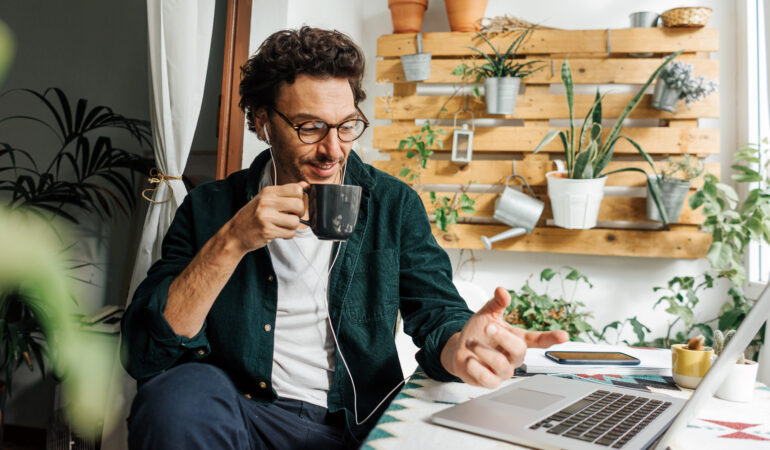The blame game: How to stop the cycle of anger and self criticism
I had this self critical moment the other day. I had made a plan for all the things I needed to get done. I was going to stop and get a few errands done before I headed into the office. I was sure I could get things completed and into the office with plenty of time to spare. But I found myself with a very unexpected change in my plan. In an instant, I noticed myself in this space where it felt like everything else in me was in wild turmoil, as if the world had stopped for a moment and I was stuck in this frenzy of emotion and frustration.
Maybe you’ve faced one of these moments. One moment you are sailing along perfectly, feeling calm, centered and ready to conquer the day. The next moment, you find yourself feeling overwhelmed, your mind and emotions spinning. It’s in these moments that you can feel like you’ve been completely derailed from the place of focus and connection with yourself. Like your very sense of safety and happiness is gone.
Blaming Others vs. Blaming Myself
Often in these moments we can find ourselves moving toward two common responses. The first is this feeling of anger at the people or situation around us. We press our fear and frustrations outward onto those around us. You may find yourself feeling your internal pressure rising and getting defensive and reactive. This can lead to moments of responding with yelling or blaming others.
On the other side of this is frustration toward yourself. Your mind starts to race and you find yourself stuck in these self-defeating thoughts. The feeling of fear and anger are aimed within us, with blame and self-criticism toward ourselves. You may find yourself feeling foolish or embarrassed, and begin to blame yourself for all the things you should (or shouldn’t) have done.
These responses are both natural coping mechanisms that we use to help us to try to move through difficult moments. Whether is an unexpected change of plans or a critical comment from a co-worker or partner – these moments can cause us to begin to move toward these responses of blame and self-criticism. This is linked with our survival instinct as a way that our nervous system is using to try to protect us from moments where we feel some kind of threat, which results in this fear response turning on.

Begin to understand the pain behind the blame.
Whether the blame is internalized in blaming ourselves, or more external in our frustration and anger toward others, both of these are an emotional response to a deeper sense of pain that we are responding to.
But the only way to help in moving past these, is to begin to understand what is going on that is behind these behaviors.
Using these three steps, you can begin to allow yourself to slow down the frustration and begin to calm these patterns of blame.
3 steps to slow down and stop self criticism.
1. Tune in to slow down.
Slowing to take a few breathes can be a huge help when you notice these feelings of anger or blame that you may be experiencing. Often, when we are overwhelmed with fear or anger we are unable to access the place of being able to regain control and calm. It can be helpful to just allow yourself to be present in the feeling and try to regain control of yourself in the moment. In these moments our fear response often has us going into a place of heightening of physical tension – our heart rate rises, our breath gets short and shallow, our muscles can get tense. It is important to disrupt this place of physical tension to be able to then allow yourself to feel safe enough to slow down and decrease the blame. Breathing in as you count up to 5 and then counting back down from 5 as your breath out can be a great way to help slow yourself down. Tuning into notice this intentional act of slowing your breath can remind you that you are able to regain control.
2. Begin to understand what you are feeling.
It can be helpful to ask yourself, what is it that is feeling attacked or threatened right now? It can be hard in the moment to be able to understand what it is that is going on underneath the anger and blaming behaviors, but taking a moment to consider what it is that is the deeper feeling can help us to begin to allow a greater space for understanding that can help us to feel more calm and in control. You may first start with stating that you are feeling angry or frustrated. Then begin to ask yourself what am I feeling that is fueling the feeling of anger or self-criticism. Anger is usually a response to a deeper internal feeling and it is important to be able to name that underlying feeling to help in reducing the blame and criticism that you are experiencing. It could be that you feel helpless or unseen; maybe you feel alone or unsupported. Whatever it is, taking a moment to understand and name this feeling is a powerful way to begin to regain control over the anger and blame.
3. Imagine yourself as you would a close friend.
As you begin to notice this underlying feeling, it can be helpful to imagine yourself as you would a close friend. If for a moment, you can imagine your friend telling you about how they are feeling misunderstood and helpless, you might do something like slow down and take a moment to say that you are sorry they are feeling this way. You might lean a little closer and ask how you can help them. You might remind your friend of all the ways you see her as helpful and valuable. These are likely the same things that you are needing to know to help you to slow down the blame and anger and begin to regain a feeling of internal control and support that you need to be able to move forward. It could be helpful to use a word or phrase that you can say to yourself that can help to calm this feeling of anger and frustration. Something like, “I am able to make decisions for myself” or “I am not alone and can ask for help” can be really helpful to slow down regain a sense of confidence and control.
These overwhelming moments of blame and frustration don’t have to keep you from being able to stay in control and in tune with your truest self. Learning these three simple steps can help to take you from a place of regret, anger and fear and into a place of connectedness with what you need most.
Gaining the confidence you need to help you overcome these patterns of blaming yourself and others is possible. It can be helpful to have someone to come alongside you in this process of change.
I help people like you to begin to understand their own needs and to move toward a greater place of connection with themselves and those they are closest with.
Click below to schedule a free consultation.





















